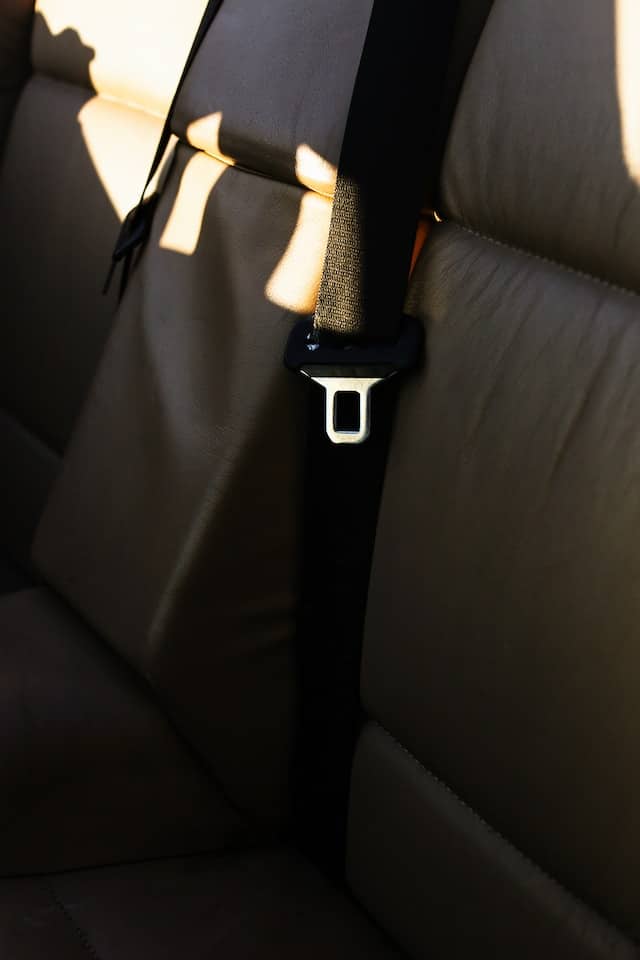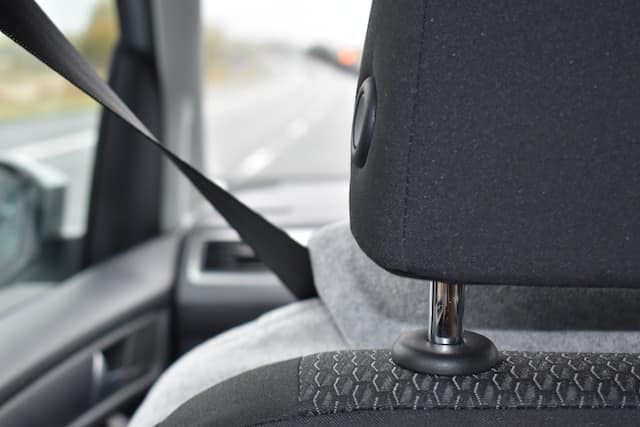
A seatbelt not retracting can be a frustrating and potentially dangerous problem. Several factors can lead to this issue, with the main culprits often being a damaged retractor, a twisted belt, accumulated dirt and grime, general wear and tear, and a faulty locking mechanism. In some cases, a damaged spool or extremely cold weather conditions can also prevent proper seatbelt retraction. Addressing these problems promptly can ensure the seatbelt’s functionality and maintain the vehicle’s safety standards. This article provides a concise guide on why this issue occurs and how to fix it.
Understanding the Seatbelt Mechanism
A seatbelt operates on a fairly simple mechanism. It consists of a retractor mechanism equipped with a spool attached to one end of the belt. The retractor has a spring that applies torque to the spool, causing it to wind up and keep the seatbelt taut. When you pull on the seatbelt, it unwinds from the spool, and when you release it, the spring causes the spool to wind back up, retracting the belt. If this retraction doesn’t occur, it indicates a problem with the system.
How to Untwist a Seatbelt

If your seatbelt is twisted, here are the steps to fix it at home:
Create Slack
Unbuckle the seatbelt to create slack. This will allow you to work with the belt more easily.
Feed the Belt
Feed the belt back into the retractor. Be sure to do this slowly and carefully to avoid causing any further twists.
Extend the Belt
Slowly pull out the seatbelt until it is fully extended. This will give you a clear view of the entire belt, making it easier to spot any twists.
Inspect the Belt
Look over the belt carefully for any twists. If you find any, straighten them out.
Remove Paneling
If you can’t find any issues with the belt itself but it’s still not retracting properly, the problem may be with the retractor mechanism. In this case, you may need to remove the paneling to get a closer look at the mechanism. If you’re not comfortable doing this yourself, consider taking your vehicle to a professional mechanic. They can inspect the retractor and fix any issues they find.
Remember, if the belt is twisted, simply straightening it and feeding it back into the retractor may solve the problem. However, if the belt is still not retracting properly after this, it’s best to seek professional help to avoid causing any further damage.
Common Reasons for a Seatbelt Not Retracting
Several issues might be the root cause of a seatbelt not retracting. They include:
Twisted belt
A belt can sometimes get twisted in the retractor, preventing it from retracting correctly.
Dirt and grime build-up
Over time, dirt, grime, or even spilled liquids can accumulate on the belt and within the retractor, hindering its function.
Worn-out retractor spring
The retractor’s spring can become worn or damaged over time, causing it to lose its ability to wind the spool.
Damaged retractor mechanism
In some cases, the retractor mechanism itself might be damaged, preventing the seatbelt from retracting.
Troubleshooting a Seatbelt Not Retracting

To diagnose a seatbelt that won’t retract, start by checking for visible issues like twists in the belt. If the belt is twisted, straightening it might resolve the problem. If the belt appears clean and straight, the issue may lie in the retractor.
Fixing a Seatbelt That Won’t Retract
Here are some solutions to common seatbelt retraction problems:
Untwist a Seatbelt
Simply smooth out the belt and pull it in and out a few times to ensure it retracts smoothly.
Cleaning a Dirty Seatbelt
Use a mild fabric cleaner to clean the belt, then pull it out fully and allow it to air dry before retracting it.
Professional Help
If the issue persists, it may be due to a worn-out spring or a damaged retractor mechanism. In this case, it’s best to seek help from a professional mechanic for a replacement.
Seatbelt Extenders for Cars: An Additional Solution for Retraction Issues
[lasso id=”5555″ link_id=”2431″ ref=”amzn-zoedul-2pcs-seat-belt-extender-make-you-feel-comfortable-driving-car-cup-holder-coaster” sitestripe=”true”]Seatbelt extenders can be a helpful tool in some cases, especially for individuals who need extra length in their seatbelts. However, they are not a direct solution to a seatbelt retraction issue. These extenders are devices that add length to the seatbelt, allowing larger individuals or child car seats to be secured more comfortably.
In a situation where a seatbelt is not retracting, the problem typically lies within the retraction mechanism itself, such as a twisted belt, a buildup of dirt and grime, or a worn-out retractor spring. While a seatbelt extender can provide additional belt length, it doesn’t address these issues and hence, would not rectify a retraction problem.
However, if a seatbelt retraction issue is caused by the belt being stretched beyond its intended length due to the need for more belt length, a seatbelt extender could potentially alleviate the issue. By providing the extra length needed, the original seatbelt would not need to be stretched as far, which might improve retraction.
It’s worth noting that while seatbelt extenders can be a helpful tool, they should be used properly to ensure safety. Always ensure that the extender is compatible with your vehicle’s make and model, and when in doubt, consult with a professional. The incorrect use of a seatbelt extender can potentially compromise the safety provided by the seatbelt, so always prioritize correct usage and installation.
Preventing Future Seatbelt Retraction Issues
Preventive measures can help avoid seatbelt retraction problems in the future. Regular cleaning of your seatbelt can prevent dirt and grime build-up. Also, make sure to always pull out and retract your seatbelt smoothly to avoid twisting. Lastly, consider regular professional checks to ensure the retraction mechanism is in good working order.
In conclusion, while a seatbelt not retracting can be a nuisance, it’s often a problem that can be fixed easily. Whether it’s a simple twist, a dirty belt, or a more complex issue with the retractor mechanism, resolving the issue promptly ensures your safety on the road. Remember, regular maintenance and proper usage can help prevent such issues and keep your vehicle’s safety features functioning optimally.
Seatbelt Not Retracting: FAQs

Q: What is the most common cause of a seatbelt not retracting?
A: The most common cause is often a damaged retractor or a twisted seatbelt. However, dirt and grime buildup or general wear and tear can also contribute significantly to this problem.
Q: How can I fix a seatbelt that won’t retract?
A: Depending on the issue, simple solutions like cleaning the seatbelt or untwisting it might solve the problem. However, if the retractor or locking mechanism is damaged, professional help may be required.
Q: Can weather conditions affect seatbelt retraction?
A: Yes, extremely cold temperatures can affect the retraction mechanism, causing the seatbelt to retract slower or not at all.
Q: Is it safe to drive if my seatbelt won’t retract?
A: Driving without a properly functioning seatbelt can significantly increase the risk of injury in case of a collision. Therefore, it’s advised to fix any seatbelt issues before driving.
Q: How much does it cost to replace a non-retracting seatbelt?
A: The cost to replace a seatbelt can vary widely depending on the make and model of the vehicle, as well as labor costs. Generally, you might expect to pay anywhere from $100 to $350 per seatbelt. High-end or specialty vehicles might be more. Please note that this is just a general estimate and actual costs can vary. It’s always best to get a quote from a professional mechanic or your vehicle’s manufacturer.
Q: Should I replace my seatbelt if it’s not retracting properly?
A: Not always. While replacement might be necessary for some cases, often the problem can be fixed by addressing the root cause like cleaning, untwisting the belt, or repairing the retractor.


